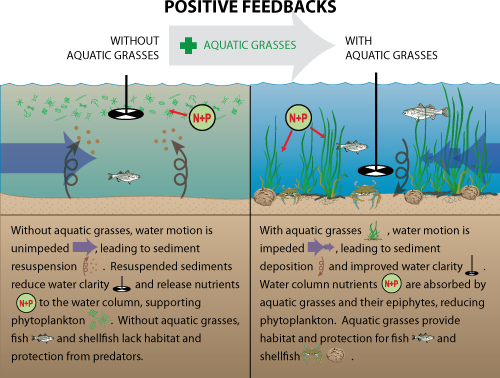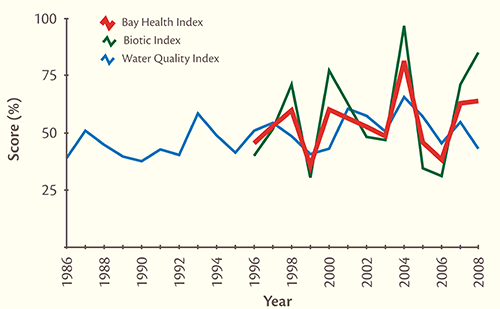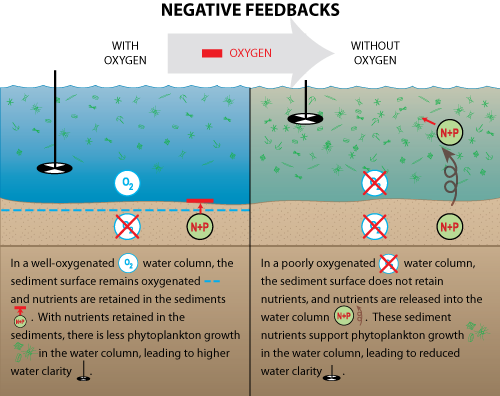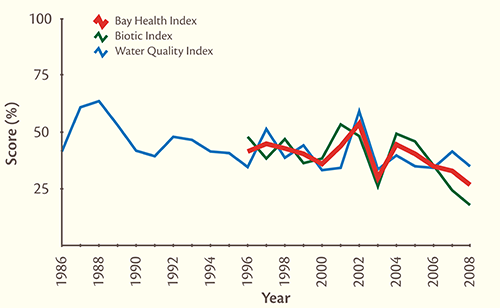Chesapeake Bay restoration: Are we headed in the right direction?
Bill Dennison ·The Chesapeake Bay Program has a long history of setting goals, and unfortunately an equally long history of NOT reaching these goals. The initial Chesapeake Bay Program goal, set in 1984, was for a 40% reduction in nutrient loads entering the Bay, specifically nitrogen and phosphorus. In spite of considerable investments in various nutrient reduction activities, this original goal has not been met, yet a variety of new goals have superseded these original goals. One of the reasons that the goal of a 40% reduction of nutrients has not been met is due to population growth in the watershed. Successive Chesapeake Bay agreements (for example, in 1987 and Chesapeake 2000) also emphasize goals. There are over one hundred goals specified in Chesapeake 2000. At face value, setting quantitative goals makes sense. Goals provide a benchmark and a level of accountability for the restoration effort.
Two things have conspired to undermine the value of setting Chesapeake Bay Program goals. First, the goals are set for time periods beyond the political life span of elected officials. By the time the allotted periods for the goals have lapsed, there is a new suite of elected officials in office, thus there is no one currently in office to be held accountable for failing to meet the goals. Secondly, the goals that are set for Chesapeake Bay tend to be 'aspirational' goals in that they are overly ambitious, as they generally do not take into account population growth, land use conversion or climate change. These factors conspire to overwhelm the adaptive capacity of the ecosystem and the goals are pretty much doomed to fail from the start. Land conversion to urban/suburban development have served in many cases to reverse the restoration progress so that degradation has continued to occur in spite of progress on sewage treatment upgrades, for example.
The directionality or trajectories of restoration progress needs to be a focus. In other words, instead of setting numerical, quantitative goals for a specific endpoint, perhaps aiming to create a positive trajectory should be the focus of restoration. The Chesapeake Bay health index that was created for the Chesapeake Bay report card was back-calculated for the years when there was sufficient data. From this 20+ years of Bay Health Index, three clear trajectories emerged: 1) Improving trajectories (e.g., Upper Western Shore, James River), 2) degrading trajectories (e.g., Upper Eastern Shore, Lower Western Shore of Maryland) and 3) no significant trajectories (e.g., Potomac River, Patuxent River).
One of the reasons that the direction of the trajectories is important is a result of feedbacks that occur, both positive and negative ecological feedbacks. An example of positive ecological feedbacks that are occurring in the Upper Bay involves the resurgence of aquatic grasses. The canopy of the various species of aquatic grasses serves to baffle the water column, reducing water velocity and causing suspended material to settle to the bottom, resulting in improved water clarity. In addition, aquatic grasses and various algal epiphytes living on their leaf surfaces absorb nutrients from the water column, leaving less nutrients for phytoplankton to absorb.


An example of negative ecological feedbacks that are occurring in the lower Western Shore of Maryland involves the low oxygen conditions in bottom waters of the tributaries. These low oxygen levels in the Severn and Magothy Rivers serve to curtail the amount of oxygen available to the sediments. When oxygen levels at the sediment surface reach zero, nutrients rapidly begin to diffuse into the overlying water column instead of being retained in the sediments. More water column nutrients mean that more phytoplankton can grow and then the subsequent decomposition of these phytoplankton exacerbate the dissolved oxygen problem.


Setting the goal to be a positive ecological trajectory would resonant with people involved in the Bay restoration. Knowing that each year is getting better, even if in some years it is an incremental improvement, is a very positive feedback to the community. It is demoralizing to work hard on Bay restoration activities and not see any measurable improvement. However, having a positive ecological trajectory can create self fulfilling attitudes—knowing that their efforts are paying off can inspire even bolder restoration efforts. While goals do let you know where you are on a relative scale: "Where do we measure up against our goals?", knowing which way you are going (up or down) answers a more fundamental question: "Are we heading in the right direction?"
About the author
Bill Dennison

Dr. Bill Dennison is a Professor of Marine Science and Vice President for Science Application at the University of Maryland Center for Environmental Science.

